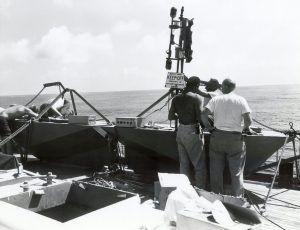Understanding Next-Generation Prototype Testing Systems
Welcome to the future of prototype testing systems. In the ever-evolving world of technology and product development, prototype testing is an essential step in ensuring that a product is ready for market. As technology advancements continue to push innovation forward, the next generation of prototype testing systems is set to revolutionize the way we test and refine our designs. In this article, we’ll dive into what these next-generation prototype testing systems are, how they work, and why businesses in all industries should start implementing them into their testing processes.
Understanding Next-Generation Prototype Testing Systems
What are Next-Generation Prototype Testing Systems?
Next-generation prototype testing systems, also known as advanced prototype testing or virtual testing systems, use state-of-the-art technology to simulate real-world testing scenarios in a virtual environment. These systems allow businesses to test and evaluate their prototypes with greater accuracy and speed, reducing the need for physical prototypes and saving both time and money in the development process. They combine computer-aided design (CAD), virtual reality (VR), and advanced simulation tools to create a realistic and dynamic testing environment.
How do Next-Generation Prototype Testing Systems Work?
Next-generation prototype testing systems use powerful software algorithms to replicate the physical properties and behavior of a product in a virtual environment. The process starts with creating a digital model of the product using CAD software. This model is then imported into the testing system’s simulation software, where engineers can add details such as material properties and operating conditions. Once the model is ready, the system uses advanced simulation methods to test the product in a virtual environment, taking into account factors like stress, thermal performance, and fluid dynamics.
The testing process is highly versatile, allowing for multiple design iterations and simulations to refine the product’s performance. Engineers can quickly make changes to the digital model and test it again, eliminating the need for physical prototypes and costly rework. This iterative process helps businesses save time and resources while achieving highly accurate results.
Why Should Businesses Use Next-Generation Prototype Testing Systems?
The benefits of next-generation prototype testing systems are numerous and impactful. The most significant advantage is the reduction in development time and costs. With the ability to simulate and test different variations of a product quickly, businesses avoid the lengthy and costly process of creating and testing physical prototypes. This means products can reach the market faster, giving businesses a competitive edge.
Next-generation prototype testing systems also enhance product quality. With the ability to test a product in a virtual environment, engineers can identify design flaws and make improvements before physical testing. This leads to higher-quality products and reduced design errors, increasing customer satisfaction and trust in the brand.
Moreover, virtual testing reduces the environmental impact of the product development process. With fewer physical prototypes needed, there is less waste and carbon emissions, making it a more sustainable approach to product testing.
In Conclusion
The future of prototype testing is here, and businesses need to embrace it. Next-generation prototype testing systems combine cutting-edge technology with sophisticated simulation tools to create a faster, more accurate, and cost-effective way of testing products. The benefits of implementing these systems are undeniable, and businesses that do so will have a competitive advantage in their industry. So, it’s time to embrace the power of virtual testing and take your product development processes to the next level.











